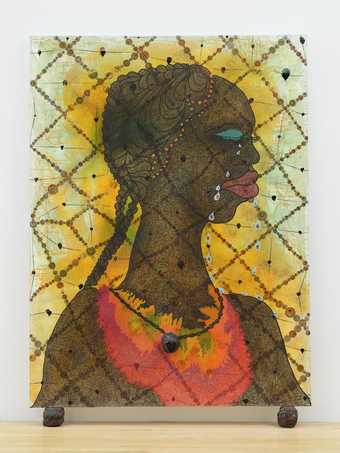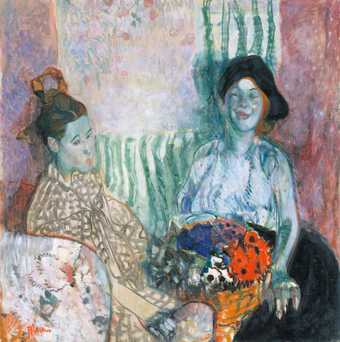Press play and discover John Singer Sargent's painting Carnation, Lily, Lily, Rose. Hear a detailed description of the artwork, descriptions of the colours and forms in the painting, and how the artist made the work.
John Singer Sargent Carnation, Lily, Lily, Rose 1885-6
This is an audio description of Carnation, Lily, Lily, Rose by John Singer Sargent. The painting hangs in Tate Britain in the 1840s gallery.
The title of this painting comes from the song 'The Wreath', by the eighteenth-century composer of operas Joseph Mazzinghi, which was popular in the 1880s.
Sargent and his friends frequently sang around the piano at Broadway, the house where this was painted. The song asks the question 'Have you seen my Flora pass this way?' to which the answer is 'Carnation, Lily, Lily, Rose'.
The painting is almost square, though it originally extended for two more feet to the left. Sargent cut this section off to centralise the composition. Its dimensions are 1m 74 x 1m 54, so its height is about the size of an average adult. It is a life size painting of two young girls in a garden lighting Chinese paper lanterns in the twilight. The two girls are Polly and Dolly Barnard, daughters of a friend, chosen because they had the exact hair colour Sargent was seeking.
Dolly, aged eleven, is on the left; Polly, aged seven, is on the right. Both girls wear white summer dresses with frilly necks, like cotton nighties, which cover them completely from their necks down to below the knee. The dresses are very full and billowy, and have full length puffy sleeves. The white fabric picks up and reflects the orange coloured light of the paper lanterns that surround them, suspended from a horizontal line which is strung and wound between tall lily stems.
The two girls stand almost knee deep in the carnations which grow upwards and diagonally from the ground, wearing black boots. They have light brown hair cut short above their necks. Dolly, in the centre of the canvas, is positioned with her back slightly turned towards us so we see her face in profile.
She is holding a paper lantern in her left hand and is lighting it using a long taper with her right hand. Her face is glowing with the upward pointing light coming from the lantern which glows a wonderful orange.
Polly, the younger girl on the right-hand side of the composition, also lights a lantern in the same way but hers is not quite so bright yet. She is turned towards us so we see her face in full, again lit up from below by the candlelight of the lantern she is lighting. Both girls have expressions of concentration on their faces as they carefully light the lanterns.
The sisters are surrounded by flowers; deep burgundy and cream carnations on blue-green stems in the lower quarter of the composition, pink and white roses to either side of them and tall creamy white lilies all around and above them. There are eight more globe and tube shaped paper lanterns hanging from the line strung between the branches and stems around the girls each one glowing orangey pink and looking remarkable against the darker colour of the leaves and stems which surround them.
Occasionally a lily flower or a few leaves fall just in front of a lantern which creates a back-lit shape contrasting the deep green leaves with the bright orange, pink and white lanterns. The green foliage gradually changes in colour from top to bottom, influenced heavily by the rapidly changing light conditions of the moment of nightfall; the leaves and stems at the top of the picture are bright green, and those at the bottom of the composition are more of a blue-green colour.
The inspiration for this picture came during a boating expedition Sargent took on the Thames September 1885, with the American artist Edwin Austin Abbey, during which he saw Chinese lanterns hanging among trees and lilies on the riverbank. He worked on the picture from September to early November 1885, returning to it during the summer of 1886, finally completing it in October. Sargent was able to work for only a few minutes each evening when the light was exactly right. He would place his easel and paints out beforehand, and pose Polly and Dolly in anticipation of the few moments when he could paint the mauvish light of dusk.
As autumn came and the flowers died, he replaced the blossoms with artificial flowers. A friend described his painting technique: “He took up his place at a distance from the canvas, and at a certain notation of the light ran forward over the lawn with the action of a wag-tail, planting at the same time, rapid dabs of paint on the picture, and then retiring again, only, with equal suddenness, to repeat the wag-tail action. All this occupied but two or three minutes, the light rapidly declining, and then, while he left the young ladies to remove his machinery, Sargent would join his friends again, so long as the twilight permitted, in a last turn at lawn tennis.” The next day he would scrape off most of the previous evening’s work and start again.





